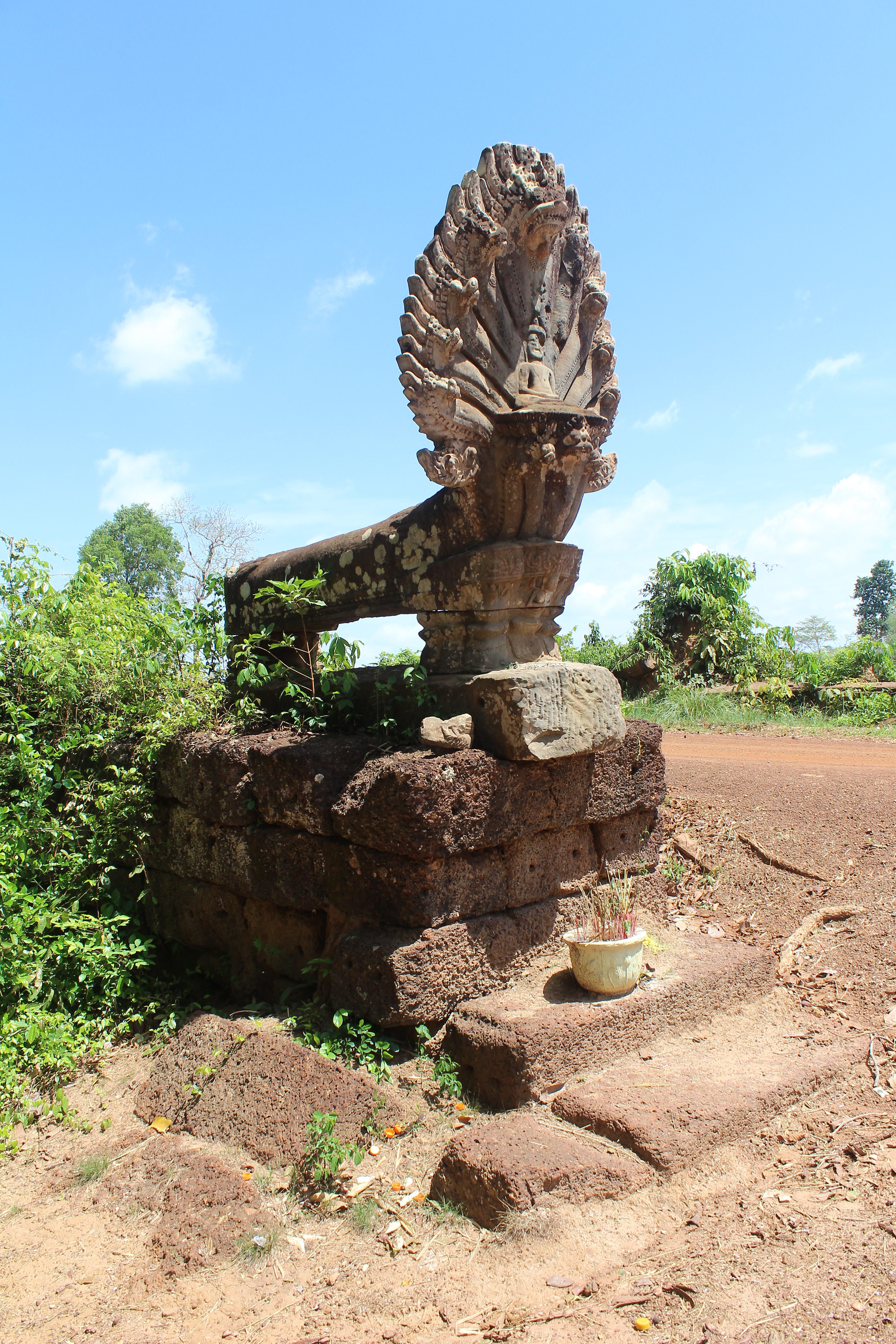Cambodia, Preah Vihear province, Angkor period (ruler: Suryavarman I), 11th century; Sandstone and laterite
Angkor’s rulers maintained provincial centers that were reached through ancient roads. One such road runs one hundred kilometers along a directly east-west trajectory that connects the main Angkor area with Preah Khan in Kampong Svay province. The Angkor rulers and residents also crafted sophisticated irrigation networks that diverted the region’s plentiful water resources toward cultivation of the land. The road from Angkor to Preah Khan crosses at least ten of these streams by means of bridges decorated with naga (serpent) balustrades, a hallmark of Angkor-era art.

Spean Ta Ong is the most impressive of the bridges. The sandstone and laterite structure spans more than seventy-seven meters. Made of finely carved sandstone, the multiheaded naga rises majestically from the balustrade’s end.

A steep flight of laterite steps leads down to the river on both sides of the bridge.

Evidence of tunneling—a Khmer technique for quarrying stone from the riverbed—can be seen here where the river is dry.



